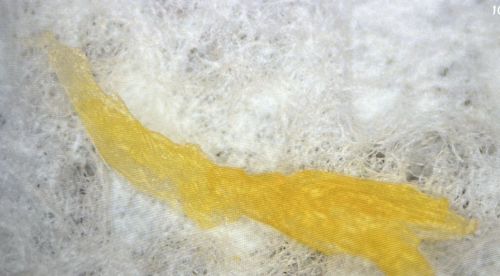Webbing Clothes Moth Larva
Scientific Name: Tineola bisselliella
Order & Family: Lepidoptera (moths and butterflies), Tineidae (fungus moths and bagworm moths)
Size: Larvae can grow up to 10-13 mm (0.4-0.5 inches) in length. Adult moths are typically 6-8 mm (0.2-0.3 inches) long with a wingspan of 12-17 mm (0.5-0.7 inches).

Natural Habitat
Commonly found in dark, undisturbed areas of homes and museums, such as closets, attics, storage chests, and underneath furniture, where they have access to their food sources like woolens, furs, and stored fabrics.
Diet & Feeding
The larvae primarily feed on natural fibers, including wool, silk, fur, feathers, and sometimes cotton or synthetic blends that are soiled with food, sweat, or urine. They prefer fibers of animal origin.
Behavior Patterns
Larvae typically live in burrows or silken tunnels and are known to be destructive to clothes, carpets, and other textile items. The adult moths are generally harmless and do not feed, focusing on reproduction. The entire life cycle from egg to adult is usually 4-10 weeks.
Risks & Benefits
The primary risk is economic damage to textiles, clothing, carpets, and other items made of natural fibers. There are generally no benefits to humans or the ecosystem as they are considered a pest species in human environments.
Identified on: 9/3/2025